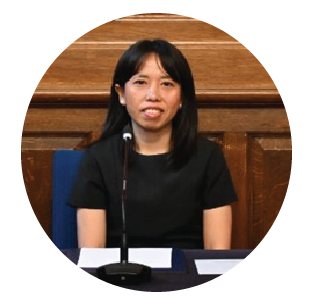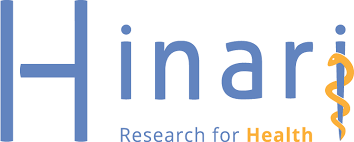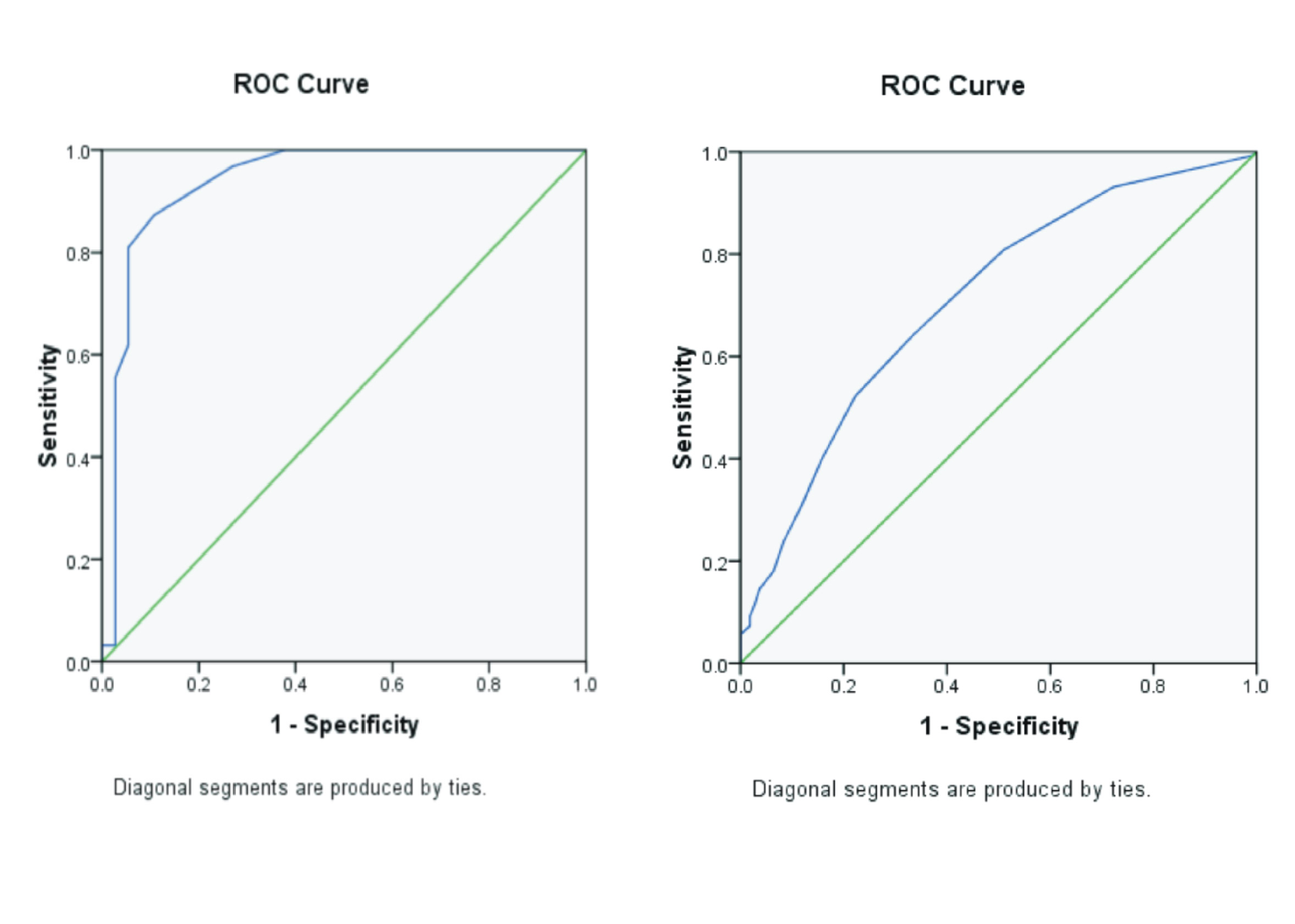Submissions
Submission Preparation Checklist
As part of the submission process, authors are required to check off their submission's compliance with all of the following items, and submissions may be returned to authors that do not adhere to these guidelines.- The submission has not been previously published, nor is it before another journal for consideration (or an explanation has been provided in Comments to the Editor).
- The submission file is in Microsoft Word or RTF document file format.
- The text adheres to the stylistic and bibliographic requirements outlined in the Author Guidelines, which is found in About the Journal.
- If submitting to a peer-reviewed section of the journal, the instructions in Ensuring a Blind Review have been followed.
Author Guidelines
1. The submitted manuscript to the editors is one that has not been published in any other scientific journals either in print or online or has not been submitted to another journal, proven by filling and submitting an Author's Statement
2. The manuscript is in English, well-written, clear, straightforward, and concise.
3. All submitted manuscripts must use the online submission service. However, if you don't have an account, you can register as an author and fill the registration form. These supplementary documents must be considered and completed in the Online Submission:
- Signed Copyright Transfer Agreement (CTA) (scan the document after signed).
- Signed author's statement form (scan the document after signed).
- Signed title page form (scan the document after signed).
- Signed covering letter (scan the document after signed).
- Signed conflict of interest disclosure form (scan the document after signed).
- If you have a problem, you can send the manuscript and supplementary documents via email: jvhs@journal.unair.ac.id
4. The manuscript should be prepared according to the following author guidelines in the Template [Download Documents Template]
5. Manuscripts sent back to the authors after revision should be returned to the editor immediately. The revised manuscript should be uploaded to the online submission feature in the upload author version from the review task window (If you have a problem, you can submit a revision in via email). The revised document should include:
- One (1) MS Word file for Revision Note in a table with respect to the reviewer's comments including the location of the revision on the revised manuscript. The table columns should be Number, Reviewer's Comments, Answer/Revision Note, and Location of Revision (page number, and/or line).
- One (1) MS Word file for the Revised Manuscript file according to Template-based format (MS Word file) (important: highlight the revised sentences in red). The revised manuscript returned later than three months will be considered as a new submission and will be reviewed again by other peer reviewers.
6. Upon receiving the manuscript, the editor will send a "notification for processing" notice to the author at least 14 days afterward.
7. Each article submitted to the editorial office of the Journal of Vocational Health Studies is not charged for any fees (free - no page charge) including article processing fees. The publication fee is borne by this journal publisher.
A. The research manuscript has the following systematics arrangement
The script is typed using Microsoft Word program; with A4 size paper. The font used should be Times New Roman, size 14 pt for the title, and 12 pt for the contents of the script. Headlines are typed in bold, whereas Latin names are typed in italics. The script is typed using a space of 1.5 cm with the left, right, and bottom margin limits of 2 cm and a top of 1.5 cm. The length of the script should not be below 10 pages and does not exceed 12 pages. All scripts are numbered with page numbers and line numbers. [Download Documents Template].
- The title is written in English.
- The author's name (written completely without title), the author's address, and the short title (running title).
- The headline is no more than 14 words and a short title is not more than 6 words.
- The author's address is written complete with the majors/departments or laboratories accompanied by the institution/university and postal code. If the author is more than one, with a different institution address, then each name is indexed on the Arabic numeral. At the bottom of the heading page, the identity of the correspondence author (responsible for the correspondence relationship) includes name and address with a phone number, HP, fax, and email.
2. The abstract is written in both English and Bahasa Indonesia, not more than 250 words, and is the essence of the entire writing, including background, purpose, method, outcome, and conclusion. The abstract comes with keywords that are sorted by alphabetically with 3-5 keywords.
3. The introduction written introduction contains background, supporting libraries, problem formulation, research objectives as well and research benefits Materials and methods contain explanations of the materials and tools used, time, place, engineering, and draft research.
4. The materials and methods must be described as completely as possible so that other researchers can perform retests. References are given to lesser-known methods. Materials or products used are mentioned sources or references (name of company and country, maybe accompanied by No. Catalogue). Commercial name inclusion must be with a generic name. The use of animals in research should refer to animal welfare guidelines (The World Health Organization guidelines for clinical trials, ARRIVE guidelines (Animal Research: Reporting of In Vivo Experiments), and Helsinki declaration).
5. The results are expressed clearly. If you need to be equipped with tables, illustrations (Pictures, graphs, diagrams) or photos. The results are expressed clearly. If you need to be equipped with tables, illustrations (Pictures, graphs, diagrams) or photos. Results expressed with tables or illustrations do not need to be outlined in the text. Tables are numbered and referenced sequentially in text, and titles are written briefly and clearly. Captions are placed on footnotes, not allowed in the title. All abbreviations or shorthand are please described in the footnotes. The vertical lines in the table are made to a minimum, to clarify the vision. Decimal numbers are pointed to English. Illustrations can be images, graphs, or diagrams numbered and referenced sequentially in the text. Captions are given briefly and clearly below the illustration (not in the illustrations). Color photographs must be contrasted, sharp, and vivid. The smallest size is 125 x 195 mm. Additional data in the related video can be submitted as support and will only be loaded in an online form.
6. The discussion is written apart from the results. The discussion is not a repetition of the narrative of the results but is the interpretation and analysis of the data obtained, either by referring to, comparing, strengthening, or criticizing the results of Previous research. The discussion describes the results of the research, how the reported results can solve problems, differences and similarities with previous research, and possible development
7. The conclusion is written briefly in its own paragraph at the end of the discussion and is not a separate subtitle.
8. Acknowledgments addressed to the person or institution that made an important contribution in the implementation of research (lenders, data source providers, research materials, research facilities, and others), but not a team of writers.
9. Author contribution, the contributions of each author include ideas, data generation, data analysis, manuscript preparation, and funding. Please use initials to refer to each author's contribution in this section, for example: A.B. and C.D. analyzed and interpreted the patient data regarding the disease. A.B., C.D., and E.F. conceived the study, contributed to sample preparation, and designed the study. All authors discussed the results and contributed to the final manuscript.
10. Funding support, all sources of funding for the research report should be declared, for example: This research was partially supported by Universitas Airlangga with grant number: XX/XXX/XXXX/XX/2024. If unavailable, please state 'Not applicable' in this section.
11. Data Availability, all manuscripts must include an ‘Availability of data and materials’ statement. Data availability statements should include information on where data supporting the results reported in the article can be found, including, where applicable, hyperlinks to publicly archived datasets analysed or generated during the study. Data availability statements can take one of the following forms (or a combination of more than one if required for multiple datasets):
- The datasets generated and/or analysed during the current study are available in the [NAME] repository, [PERSISTENT WEB LINK TO DATASETS]
- The datasets used and/or analysed during the current study are available from the corresponding author on reasonable request.
- All data generated or analysed during this study are included in this published article [and its supplementary information files].
- The datasets generated and/or analysed during the current study are not publicly available due to [REASON WHY DATA ARE NOT PUBLIC], but are available from the corresponding author on reasonable request.
- Data sharing is not applicable to this article as no datasets were generated or analysed during the current study.
- The data that support the findings of this study are available from [third party name], but restrictions apply to the availability of these data, which were used under license for the current study, and so are not publicly available. Data are however available from the authors upon reasonable request and with permission of [third party name].
- Not applicable. If your manuscript does not contain any data, please state 'Not applicable' in this section.
12. Conflict of Interest, all financial and non-financial competing interests must be declared in this section. If you do not have any competing interests, please state “The authors state there is no conflict of interest with the parties involved in this study" in this section.
13. Ethical Approval, if available (The complete name of the ethics committee, protocol number, and approval date). Example: This research has been approved by the ethics committee with number XX/KEPK/XX/X/2025 issued on 29th October 2024 by the Health Research Ethics Commission of the Universitas Airlangga. If unavailable, please state “This study does not require ethical approval because it does not use experimental animals and/or humans” in this section.
14. Informed Consent, if your manuscript contains any individual person’s data in any form (including any individual details, images, or videos), consent for publication must be obtained from that person, or in the case of children, their parent or legal guardian. All presentations of case reports must have consent for publication. You can use your institutional consent form. You should not send the form to us on submission, but we may request to see a copy at any stage (including after publication). If your manuscript does not contain data from any individual person, please state “Not applicable” in this section.
15. The list of references contains all the publication articles referenced in the script. The references are organized by the Harvard system. Standard reference using "Elsevier - Harvard 2”. The references are minimally 25 from the last 10 years before the date of submission. The author's name is arranged alphabetically. The references in the manuscript are as follows:
Reference from the scientific article:
- Chopade, V.V., Phatak, A.A., Upaganlawar, A.B., Tankar, A.A. 2008. Green Tea (Camellia sinensis): Chemistry, Traditional, Medicinal Uses and Its Pharmacological Activities- A Review. Journal of Medicinal Plants Research Vol. 4(19). Pp 157-162.
Reference from textbooks:
- Singh, G. 2007. Textbook of orthodontics. 2nd ed. New Delhi: Jaypee Brothers Medical Publishers (P) LTD. Pp. 387-409.
Reference from proceedings:
- Perry, C.H., Lu, F., Namavar, F., Kalkhoran, N.M., Soref, R.A. 1991. Radical Styloid. Proceedings of The 10th International Congress of Clinic; New York, USA.
- Favier, J.J., Camel, D. 1986. Enforcement of Data in Medical Information. In: Lun KL, Editor. Proceedings of the Eight International Conference on Medicine; York, UK.
Reference from thesis:
- Ramos, R. 1992. Preventive Health Amendments. PhD Thesis. College van Dekanen. University of Twente. The Netherland.
- Salim, S. 1995. Pengaruh Humiditas dan Waktu Penyimpanan serta Cara Curing terhadap Sifat Fisik, Kimia dan Mekanik Akrilik Basis Gigi Tiruan. Disertasi. Surabaya: Pasca Sarjana Universitas Airlangga.
Reference from translation book:
- Amerongen, A.V.N., Michels, L.F.E., Roukema, P.A., Veerman, E.C.I. 1986. Ludah dan Kelenjar Ludah arti Bagi Kesehatan Gigi. Rafiah Arbyono dan Sutatmi Suryo. Yogyakarta: Gadjah Mada University Press. Pp. 1-42.
Reference from the internet:
- Fernanda, A.R. 2015. Hubungan Kualitas Pelayanan terhadap Kepuasan Konsumen di Laboratorium Prodia Bandung. Available from: http://repository.widyatama.ac.id/xmlui/handle/123456789/2754. Diakses: 17 February 2015.
- Yu, F. 1997. Management of Thumbs Duplication. Emerg Infect Dis (online) http://www.cdc.gov/ncidod/ EID/eid.html.
- Koo, D.J., Chitwoode, D.D., Sanchez, J. 2008. Violent Victimization and The Routine Activities/Lifestyle of active drug users. Journal of Drug Issues 2008; 38: 1105-37. Retrieved from http://www2.criminology.fsu.edu/~jdi/
B. Original research article writing instruction
The organization of original research article manuscripts follows the following systematics:
- Title.
- Author's name.
- Abstract.
- Introduction.
- Material and Method (in the form of subject subtitles).
- Result.
- Discussion.
- Conclusion (and suggestions if any).
- Acknowledgments.
- Author Contributors.
- Funding Support.
- Data Availability.
- Conflict of Interest.
- Ethical Approval.
- Informed Consent.
- References.
C. Literature review writing instruction
The organization of literature review manuscripts follows the following structure:
- Title.
- Author's name.
- Abstract.
- Introduction.
- Literature Study (in the form of subject subtitles).
- Result.
- Discussion.
- Conclusion (and suggestions if any).
- Acknowledgments.
- Author Contributors.
- Funding Support.
- Data Availability.
- Conflict of Interest.
- Ethical Approval.
- Informed Consent.
- References.
D. Case study writing instructions
The structure of the case study script follows the following systematics:
- Title.
- Author's name.
- Abstract.
- Introduction.
- Case Study (accompanied by a photograph).
- Result.
- Discussion.
- Conclusion (and suggestions if any).
- Acknowledgments.
- Author Contributors.
- Funding Support.
- Data Availability.
- Conflict of Interest.
- Ethical Approval.
- Informed Consent.
- References.
All correspondences should be sent to the following Editorial Office:
Ratna Wahyuni (Chief in Editor)
Editorial Office of Journal of Vocational Health Studies
Department of Health Faculty of Vocational Studies, Universitas Airlangga.
Jl. Dharmawangsa Dalam 28-30, Surabaya-Indonesia 60286
Telp.: +62-31 5033869 Ext. 129 | Fax: +62-31 5053156
| Email: jvhs@journal.unair.ac.id
Copyright Notice
- The authors agree to transfer the transfer copyright of the article to the Journal of Vocational Health Studies (JVHS) effective if and when the paper is accepted for publication.
- Legal formal aspect of journal publication accessibility refers to Creative Commons Attribution-NonCommercial-ShareAlike (CC BY-NC-SA), implies that publication can be used for non-commercial purposes in its original form.
- Every publications (printed/electronic) are open access for educational purposes, research, and library. Other that the aims mentioned above, editorial board is not responsible for copyright violation.
Journal of Vocational Health Studies is licensed under a Creative Commons Attribution-NonCommercial-ShareAlike 4.0 International License
Privacy Statement
The names and email addresses entered in this journal site will be used exclusively for the stated purposes of this journal and will not be made available for any other purpose or to any other party.














































